Luna
Author: Stefan Feld
Publisher: Heidelberger Spieleverlag / H@ll Games
Year: 2010
review by

| x |
|
|
|
|
|
|
|
|
|
|
|
|
|
|
|
|
|
|
|
|
|
|
|
|
|
|
|
|
|
|
|
|
|
|
|
|
|
|
|
|
|
|
|
|
|
|
|
|
|
|
|
|
|
|
|
|
|
|
|
|
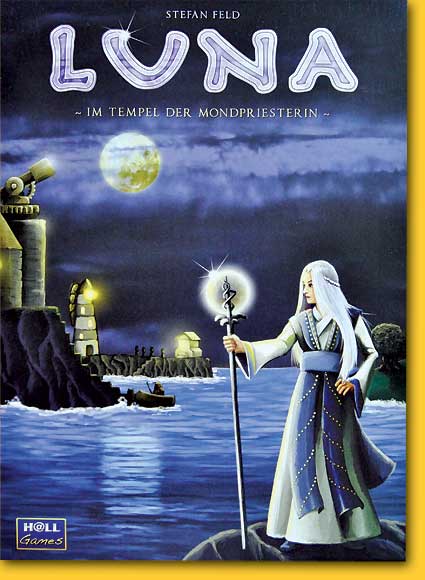 |
We have seen plenty games where we have to build and trade in order to gain the favor of a medieval king or an Arabian sultan, but how often have we directed novices for the favor of the moon priestess? At least no one can say ‘Luna’ has a worn out theme!
The game board shows the moon temple, which in turn contains several spots with an illustration and a number varying from 1 to 28, and the track for the council of priests. The lowest value spots -1 through 4 in case of four players- are each covered by one of the players with a corresponding tile, a Book of Wisdom and a novice of his own color. The tiles corresponding to the remaining spots in the temple are placed in ascending value on a path around the temple, and the temple guard is placed at the start of the path. But the most of the action takes place at the sides of the central board, on seven islands surrounding the temple island, each of them storing a number of action chits.
|
|
| x |
|
|
|
|
|
|
|
|
|
|
|
|
|
|
|
|
|
|
|
|
|
|
|
|
|
|
|
|
|
|
|
|
|
|
|
|
|
|
|
|
|
|
|
|
|
|
|
|
|
|
|
|
|
|
|
|
|
|
|
|
|
Three tokens, the moon priestess, the master builder and the apostate, iniatially placed on any island, wander around the islands during the game and benefit or hinder players in their quest. At the start of the game each player has a presence on five of the islands: one island has a shrine of his color, and on four others he has a pair of novices. Additionally everyone receives the action chits belonging to the two islands they have no presence on, and a starting supply of five influence (read:victory) points.
In every round the players perform one action on their turn; the round continues until the action Meditation -which amounts to passing- has been chosen for the fourth time. The players can’t complain about a shortage of possible actions: twelve different actions are available! Important to note is the distinction between active and inactive novices: active novices are the ones on the islands and can be used to perform actions, inactive novices are adjacent to an island and, in general, can't perform actions.
A short description of the possible actions:
|
|
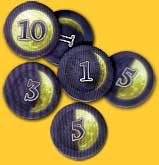 |
|
| x |
|
|
|
|
|
|
|
|
|
|
|
|
|
|
|
|
|
|
|
|
|
|
|
|
|
|
|
|
|
|
|
|
|
|
|
|
|
|
|
|
|
|
|
|
|
|
|
|
|
|
|
|
|
|
|
|
|
|
|
|
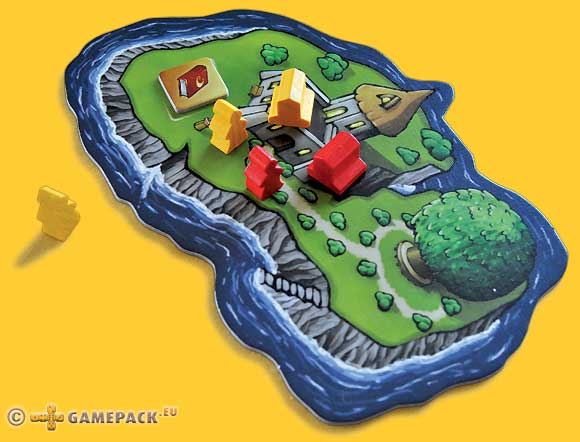 |
|
- Priest’s Favor: Turn two novices inactive on an island (or one novice if the player has a shrine on the island involved) to take an action chit of that island. Each player can only own one action chit of each kind at a time. The available action chits are: Shrine, Herbs, Tide, Sailboat, Bribery, Book of Wisdom and Novice. The Novice action chit, when played, acts as an active novice .
- Recruit: Turn two novices inactive on an island in order to add a third (inactive) novice from the supply, which means the player will have more novices in play in the following rounds.
|
|
| x |
|
|
|
|
|
|
|
|
|
|
|
|
|
|
|
|
|
|
|
|
|
|
|
|
|
|
|
|
|
|
|
|
|
|
|
|
|
|
|
|
|
|
|
|
|
|
|
|
|
|
|
|
|
|
|
|
|
|
|
|
|
- Shrine: Turn in a Shrine action chit and turn two novices inactive on the island cwhere the master builder is located to build a shrine on that island. Each player can only have one shrine on each island. The shrines give a novice a ‘discount’ of one novice when performing the Priest’s Favor or Promotion actions.
- Herbs: Turn in an Herbs action chit to change up to two inactive novices active at the same island. This action cannot be performed at the Herbs island.
|
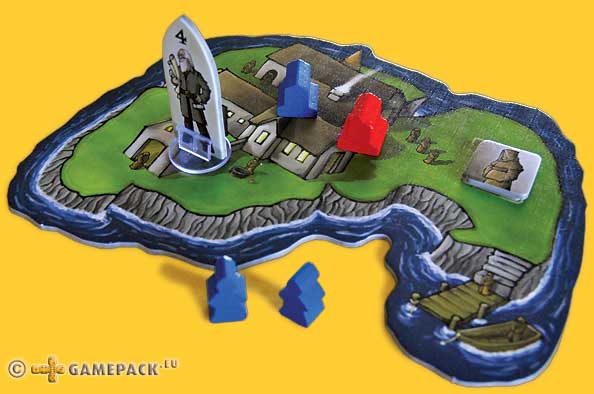 |
|
| x |
|
|
|
|
|
|
|
|
|
|
|
|
|
|
|
|
|
|
|
|
|
|
|
|
|
|
|
|
|
|
|
|
|
|
|
|
|
|
|
|
|
|
|
|
|
|
|
|
|
|
|
|
|
|
|
|
|
|
|
|
|
- Journey: Move any number of active novices to different islands; they become inactive in the process. This allows the player to have a presence at several new islands.
- Tide: Turn in a Tide action chit to move any number of active and/or inactive novices to different island, they become or remain inactive. Compared to Journey, Tide has the benefit that it allows moving inactive novices, who have already been used this round to perform a different action.
|
|
| x |
|
|
|
|
|
|
|
|
|
|
|
|
|
|
|
|
|
|
|
|
|
|
|
|
|
|
|
|
|
|
|
|
|
|
|
|
|
|
|
|
|
|
|
|
|
|
|
|
|
|
|
|
|
|
|
|
|
|
|
|
|

|
- Sailboat: Turn in a Sailboat action chit to move up to two active novices from one island to one other island. The novices remain active.
- Promotion: Turn one novice inactive on an island (this is not necessary if the player has a shrine on that island) to put another novice from the same island onto a tile on the temple path. The illustration on the tile has to match the illustration of the island the novice is moved from. The tile also has to be behind the temple guard. If a Bribery action chit is turned in, it is also allowed to use a tile in the first group in front of the temple guard.
|
|
| x |
|
|
|
|
|
|
|
|
|
|
|
|
|
|
|
|
|
|
|
|
|
|
|
|
|
|
|
|
|
|
|
|
|
|
|
|
|
|
|
|
|
|
|
|
|
|
|
|
|
|
|
|
|
|
|
|
|
|
|
|
|
- Sanctification: Move a tile containing a novice of you colour from the temple path onto the corresponding spot in the temple. If this tile is (still) in front of the temple guard, another Bribery action chit is needed. Placing the tile into the temple immediately earns the player a number of influence points depending on the current position of the temple guard. This varies from 6 points in the first round to 2 points in the final two rounds.
|
|
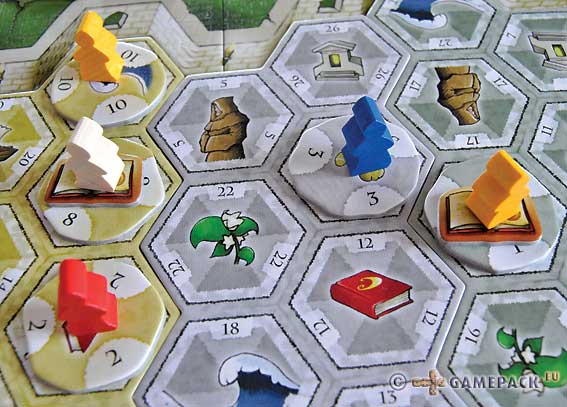 |
|
| x |
|
|
|
|
|
|
|
|
|
|
|
|
|
|
|
|
|
|
|
|
|
|
|
|
|
|
|
|
|
|
|
|
|
|
|
|
|
|
|
|
|
|
|
|
|
|
|
|
|
|
|
|
|
|
|
|
|
|
|
|
| In addition, the newly placed novice displaces all opponent novices on adjacent tiles if these tiles have a lower number than the newly placed one. Only novices having a Book of Wisdom are protected from this displacement. Displaced novices are moved outside the temple and earn the displacing player an additional point apiece. |
|
| x |
|
|
|
|
|
|
|
|
|
|
|
|
|
|
|
|
|
|
|
|
|
|
|
|
|
|
|
|
|
|
|
|
|
|
|
|
|
|
|
|
|
|
|
|
|
|
|
|
|
|
|
|
|
|
|
|
|
|
|
|
 |
|
- Book of Wisdom: Turn in a Book of Wisdom action chit to remove a book from a novice of your choice and place it under another (generally one of your own) novice of your choice. This action also immediately earns the player one influence point.
- Council of Priests: Turn any number of novices on any one island inactive to move your own player disc forward on the track for the council of priests. The disc is moved forward as many spots as the number of novices used.
|
|
| x |
|
|
|
|
|
|
|
|
|
|
|
|
|
|
|
|
|
|
|
|
|
|
|
|
|
|
|
|
|
|
|
|
|
|
|
|
|
|
|
|
|
|
|
|
|
|
|
|
|
|
|
|
|
|
|
|
|
|
|
|
| - Expulsion: Turn any number of novices inactive on the island containing the apostate to move him forward that same number of islands. |
|
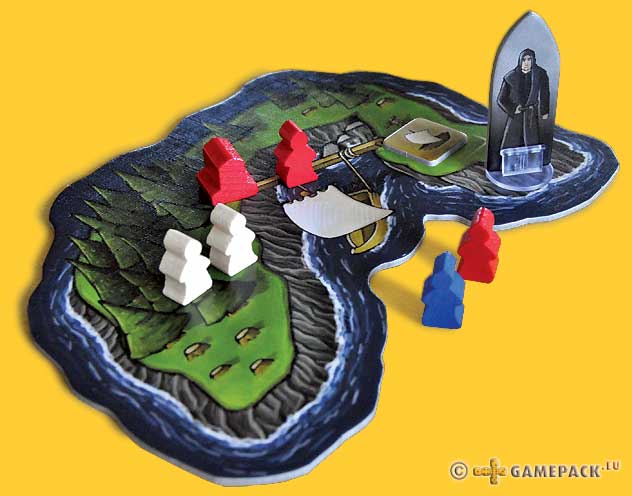 |
|
| x |
|
|
|
|
|
|
|
|
|
|
|
|
|
|
|
|
|
|
|
|
|
|
|
|
|
|
|
|
|
|
|
|
|
|
|
|
|
|
|
|
|
|
|
|
|
|
|
|
|
|
|
|
|
|
|
|
|
|
|
|
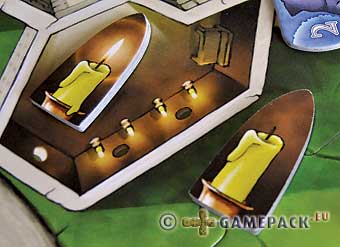 |
|
- Meditation: Turn one of the time chits, depicting burning candles, to its ‘blown out’ side. This amounts to passing for this turn, while still being allowed to act in a later turn. The player who blows out the fourth and final candle ends the round and gets one influence point |
|
| x |
|
|
|
|
|
|
|
|
|
|
|
|
|
|
|
|
|
|
|
|
|
|
|
|
|
|
|
|
|
|
|
|
|
|
|
|
|
|
|
|
|
|
|
|
|
|
|
|
|
|
|
|
|
|
|
|
|
|
|
|
| After each round influence points are rewarded for having the most active novices or shrines on the island where the moon priestess is located, and 1 point for each novice inside the temple. Also, each player who has active or inactive novices at the island where the apostate is located must turn in influence points, one more than the number of novices in his colour present. After this giving and taking of points all inactive novices become active again, the figures move forward a number of islands, the temple guard takes a step forward and all time chits are ‘lit’ again. |
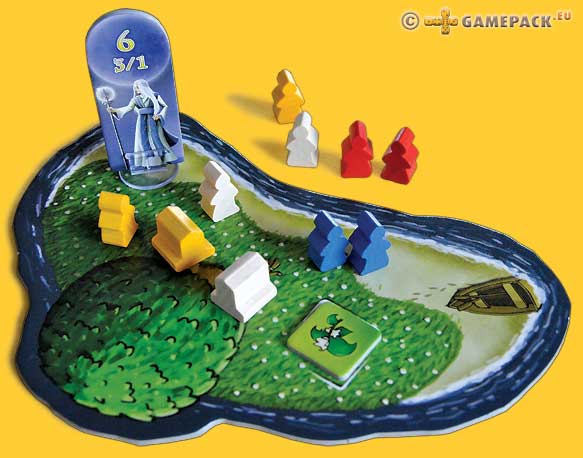 |
|
| After the sixth and final round every player gets four influence points per shrine, one point per left over action chit and 0 to 10 points depending on his position on the track for the council of priests. The order of the player with the most influence points gets to choose the new moon priestess, which, of course, is quite an honor! |
|
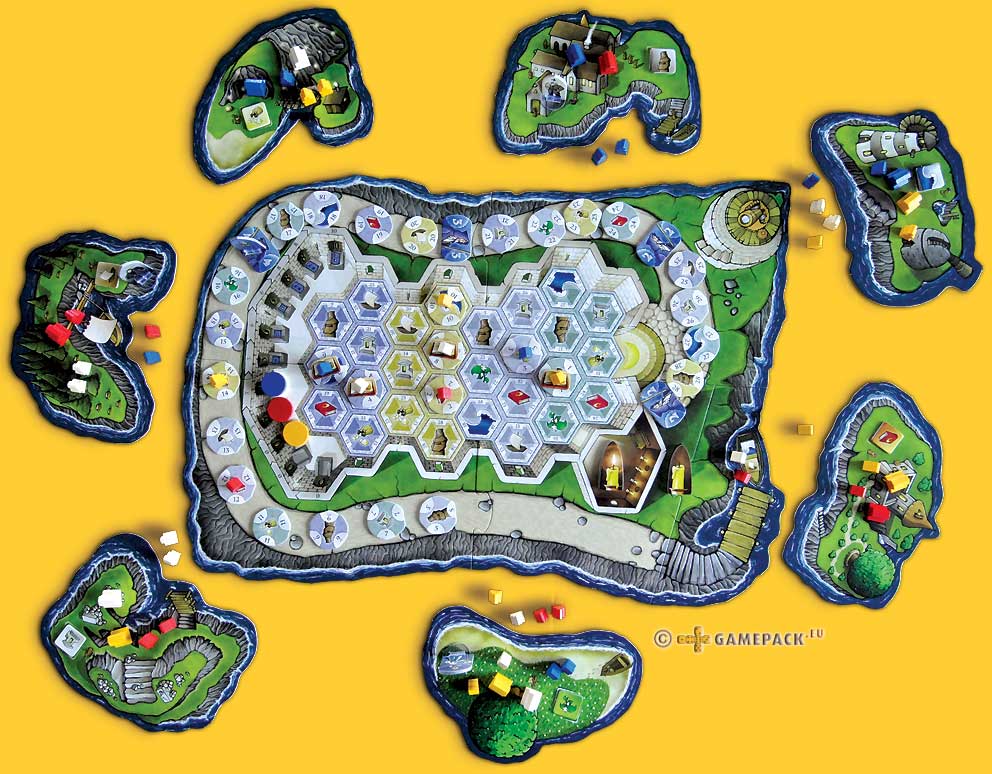 |
| x |
|
| x |
|
| x |
|
 |
|
|
|
|
|
|
|
|
|
|
|
|
|
|
|
|
|
|
|
|
|
|
|
|
|
|
|
|
|
|
|
|
|
|
|
|
|
|
|
|
|
|
|
|
|
|
|
|
|
|
|
|
‘Luna’ is the kind of game where at first it is not at all apparent what would be a sensible action, let alone a good long term plan; there are many possible ways of getting influence points. Combined with the fact that players can choose from no less than twelve different actions, it will cause a lot of players to have a trial and error approach at first. But after seeing the game ‘at work’ for a couple of rounds things start getting clearer: which actions are good to do in succession, what are my opponents after, and how do I already optimally position myself for the next round?
|
|
| x |
|
|
|
|
|
|
|
|
|
|
|
|
|
|
|
|
|
|
|
|
|
|
|
|
|
|
|
|
|
|
|
|
|
|
|
|
|
|
|
|
|
|
|
|
|
|
|
|
|
|
|
|
|
|
|
|
|
|
|
|
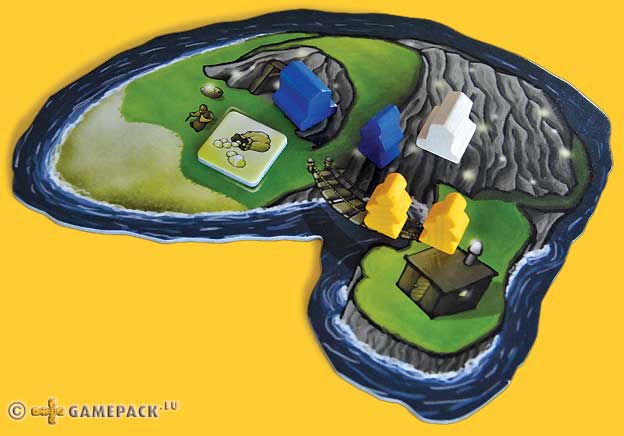 |
Each round is a matter of priorities: a player could theoretically be able to infinitely perform actions providing he has enough available novices on the right islands. But if one or two opponents start meditating i.e. passing quickly, the end of the round draws near and choices will have to be made: do I move this novice into the temple this round or do I want to gain the majority at the island of the moon priestess?
|
|
| x |
|
|
|
|
|
|
|
|
|
|
|
|
|
|
|
|
|
|
|
|
|
|
|
|
|
|
|
|
|
|
|
|
|
|
|
|
|
|
|
|
|
|
|
|
|
|
|
|
|
|
|
|
|
|
|
|
|
|
|
|
 |
|
| x |
|
|
|
|
|
|
|
|
|
|
|
|
|
|
|
|
|
|
|
|
|
|
|
|
|
|
|
|
|
|
|
|
|
|
|
|
|
|
|
|
|
|
|
|
|
|
|
|
|
|
|
|
|
|
|
|
|
|
|
|
|
These stressing choices is what makes ‘Luna’ into an absorbing and exciting game. It has a multitude of viable strategies and it forces you to plan ahead meticulously, but at the same time a player has to be flexible enough to react to the (un)expected moves of their opponents! In short, ‘Luna’ is a game that every boardgamer should try at least once.
As mentioned before, ‘Luna’ has a fairly unusual and to some not very attractive theme. The art, while certainly not badly done, also does not make the game look particularly inviting.
|
|
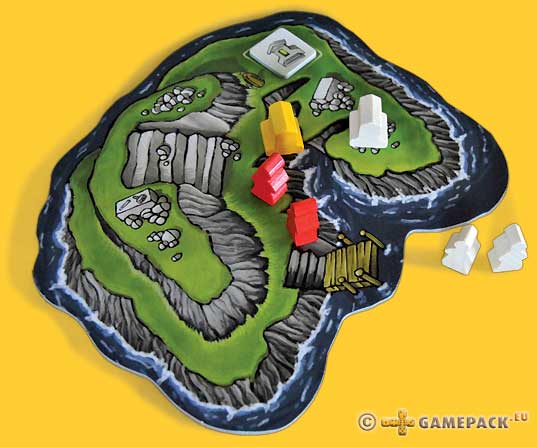 |
|
Maybe that’s why this game has flown below the radar for many players. And maybe even that’s also why Alea has passed on this gem from their resident author in favor of yet another game about building castles. Again, this is completely undeserved, because ‘Luna’ can easily be considered one of the best games of Stefan Feld!
© 2011Ugur Donmez
Luna, Stefan Feld, Heidelberger Spieleverlag / H@ll Games, 2010 - 1 to 4 players, 12 years and up, 25 minutes per player
|
|
  |
|
|
|
|
|
|
|
|
|
|
|
|
|
|
|
|
|
|
|
|
|
|
|
|
|
|
|
|
|
|
|
|
|
|
|
|
|
|
|
|
|
|
|
|
|
|
|
|
|
|
|
  |
|
|
|
|
|
|
|
|
|
|
|
|
|
|
|
|
|
|
|
|
|
|
|
|
|
|
|
|
|
|
|
|
|
|
|
|
|
|
|
|
|
|
|
|
|
|
|
|
|
|
|
  |
A solid game for the seasoned gamer |
|
  |
After past disappointments this 'Feld' manages to convince again and it would very well suit in the Alea series |
|
  |
|
|
|
|
|
|
|
|
|
|
|
|
|
|
|
|
|
|
|
|
|
|
|
|
|
|
|
|
|
|
|
|
|
|
|
|
|
|
|
|
|
|
|
|
|
|
|
|
|
|
|
| x |
|
|
|
|
|
|
|
|
|
|
|
|
|
|
|
|
|
|
|
|
|
|
|
|
|
|
|
|
|
|
|
|
|
|
|
|
|
|
|
|
|
|
|
|
|
|
|
|
|
|
|
|
|
|
|
|
|
|
|
|
| x |
|
|
|
|
|
|
|
|
|
|
|
|
|
|
|
|
|
|
|
|
|
|
|
|
|
|
|
|
|
|
|
|
|
|
|
|
|
|
|
|
|
|
|
|
|
|
|
|
|
|
|
|
|
|
|
|
|
|
|
|
 |
|
|
|
|
|
|
|
|
|
|
|
|
|
|
|
|
|
|
|
|
|
|
|
|
|
|
|
|
|
|
|
|
|
|
|
|
|
|
|
|
|
|
|
|
|
|
|
|
|
|
|
 |
|
|
|
|
|
|
|
|
|
|
|
|
|
|
|
|
|
|
|
|
|
|
|
|
|
|
|
|
|
|
|
|
|
|
|
|
|
|
|
|
|
|
|
|
|
|
|
|
|
|
|
| x |
|
|
|
|
|
|
|
|
|
|
|
|
|
|
|
|
|
|
|
|
|
|
|
|
|
|
|
|
|
|
|
|
|
|
|
|
|
|
|
|
|
|
|
|
|
|
|
|
|
|
|
|
|
|
|
|
|
|
|
|
 |
|
|
|
|
|
|
|
|
|
|
|
|
|
|
|
|
|
|
|
|
|
|
|
|
|
|
|
|
|
|
|
|
|
|
|
|
|
|
|
|
|
 |
|
|
|
|
|
|
|
|
|
|
|
|
|
|
|
|
|
|
|
|
|
|
|
|
|
|
|
|
|
|
|
|
|
|
|
|
|
|
|
|
|